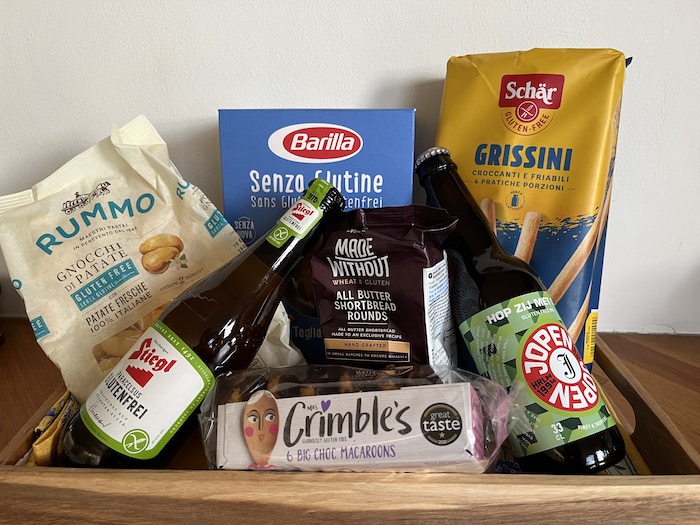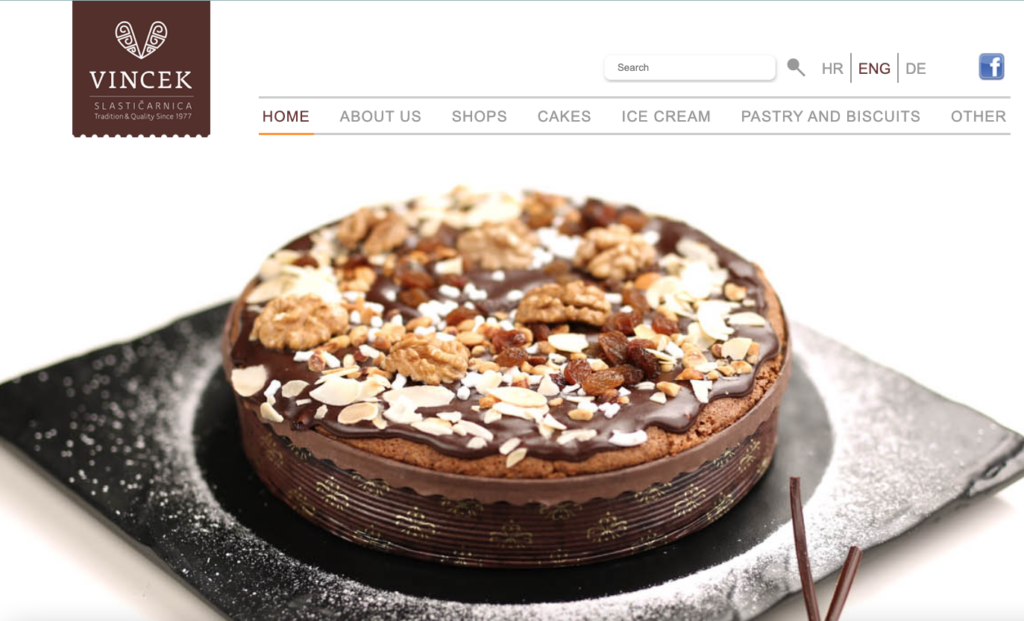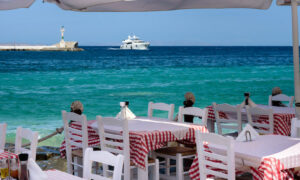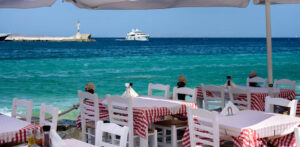Travelling with any type of allergy is, of course, challenging. I am gluten intolerant and although my intolerance isn’t life threatening, it would definitely be a letdown if I experienced the side effects of gluten when I was on vacation or in transit!
A friend has Coeliac disease, an autoimmune disease affecting the digestive system that makes a person have an adverse reaction to gluten. So, avoiding gluten is for her, vitally important health-wise.
Together she and I have shared tips and experiences along the way, and we have decided to share some with you.
Airports
Airports are the worse place if you have allergies as the food selection can be poor even for regular eaters! Plus, you don’t want to have a reaction if you are getting on a flight. Always pack a gluten-free sandwich, fruit and snacks.
In my experience you almost never find GF food in any airport restaurants. If you are a frequent traveller from one airport you will get to know where to eat or buy. I have discovered at Bristol airport that the Marks & Spencer store on the “landside” has GF sandwiches, so I always buy one there before going through security.
The same applies with inflight meals and snacks unless you have ordered beforehand.

Research, research, research

• Google is your friend when travelling with allergies. Check to see which large grocery stores are located nearby to your hotel or holiday home. In Europe many of the larger supermarkets carry at least a few basic options GF options and some have so much selection it can be quite exciting! Make sure to stock up on GF treats to carry with you just in case you get stuck. In Italy I was so excited I bought numerous bags of GF grissini and in Austria I always come home with my car stocked with tasty GF beer.
• Google Translate or other translation apps such as DeepL can be a godsend when grocery shopping, as you try to understand the contents and ingredients on packaging in a foreign language.
• Instagram is also a great resource. Just type in glutenfree(name of city) ie. glutenfreeamsterdam, and you’ll find great tips and information.
• Find Me Gluten Free is also a useful app to have on your phone. A platform linked to your location with local restaurants shared by the GF community.
• Look out for local GF blogs such as glutenfreealchemist.com and glutenfreeglobetrotter.com. There are many, many more.
Eating out
This can be the best experience or worse experience of GF travel.
Here are some tips:
• Check out the local food. Sometimes there are local dishes that are naturally GF that will always be on the menu. Fresh fish and vegetables are usually GF and an easy option to fall back on.
• Print out an explanation in the local language that you can show the restaurant staff to make your allergies/intolerances clear.
• Don’t assume things are GF… it’s better to be safe than sorry, so always ask.
• Check that fried GF food is prepared in separate fryers, especially if you are Coelic.
• Take your own bread/crackers for dips. If the restaurant doesn’t have these then don’t feel guilty bringing out your own.
• Before you eat always double-check with the server that this meal is indeed GF. Mistakes are made in the kitchen, and we have all had that moment when we look at the meal and think, “Hmmm, I don’t think that is GF.”
On that line, never be embarrassed to advocate for yourself. You are not a nuisance. Your health is important and being unwell is never fun whilst being on vacation.

GF friendly countries
• Croatia: We both gave Croatia a thumbs up. It’s very GF friendly, partly due to its local food, lots of fish and veggies, and partly for the fact that local supermarkets carry GF options and people are very open to your needs.
Zagreb gets a special thumbs up for having a GF and LF patisserie, Vis à Vis by Vincek. My excitement was a little embarrassing!
• Ireland: Ireland gets a big thumbs up. Lots of options clearly marked on menus, great selection in stores and even in gas stations.
• England: Another thumbs up goes to England. Heaps of GF options in grocery stores (I personally love Marks & Spencer’s selection & always stock up when I’m home) and clearly labelled menus. Some restaurants and pubs also offer a GF menu.
• Scotland: The same as both Ireland and England. The major supermarket chains all carry GF haggis too around Burns Night.
• Scandinavia: Eating out is expensive here but restaurants are very helpful and offer GF options. The supermarkets in both Oslo and Copenhagen carried a large range of GF products. Copenhagen even has GF bakeries.
• Italy: For a country whose food is very much wheat-based, I was blown away by the GF options both in restaurants and supermarkets. The selection in the large supermarkets was fantastic with really good brand name pasta available.
• Austria: I spend a lot of time in Vienna and generally, due to the range of international food in the city, I can find GF options. I am told it’s not so easy in the countryside. The city supermarkets do have a great selection of GF products, particularly Spar Gourmet. I am a big fan of several GF beers from Austria, particularly Salzburg’s Stiegl.
• Germany: Much like Austria the cities have a better selection of GF options in restaurants, but I usually am able to find something in the smaller towns. Larger supermarkets, such as EDEKA, have a good range of GF food generally.
Countries that are less GF friendly.
• France: After a recent visit to Paris, I was shocked how few GF options were available on the menus, and the attitude of the restaurant staff was less than supportive. I did however find a good selection of products in the supermarket Carrefour, so was able to supplement my pitiful restaurant meals.
• Slovenia: Considering Slovenia is next to Croatia, the attitude to GF was surprisingly different. Unless there was a rice dish or fresh fish (not dusted with flour before frying) and salads my choices were minimal. Thankfully, the supermarket chain SPAR had a reasonable selection of products so I just stocked up when ever I could.
• Netherlands: Living here in the countryside I can assure you that being GF can lead to the only option on the menu being fish with no sauce, steak or salad. The major cities are more aware, but it can be hit or miss even then. The menus are also not clearly marked for allergies. The supermarkets do carry a reasonable selection, particularly the larger Albert Heijn stores. A local Dutchman once told me that there weren’t many people who were gluten free in the Netherlands.
Ha!
I can only hope that these countries will slowly improve and become more aware of this dietary issue. When I first moved to the Netherlands vegetarian options were salads or veggie pasta only and now there are usually a few more options on the menu, so there is a chance it will improve, albeit slowly.
I wish all of you GF/Coeliac wanderers’ pain-free travels and happy eating.
If you have a tip to share we’d love to hear it: [email protected]
Many thanks to fellow gluten free traveller Abbie Sampson for all her tips and insight
Photographer/writer Jackie Harding was born in the United Kingdom. As a long-time expat, she lived in Boston for 12 years and in the Netherlands for the past 10 years.
Trained as a nurse in the U.K., she worked for nine years in the United States as a special education teacher’s assistant. Since moving to the Netherlands, she has discovered writing and photography.
Contributing to Dispatches since 2016, Jackie has written about her travels around Europe as well as about expat life and issues.
She also covered the Women’s March Amsterdam.
She’s married to British businessman Martin Harding and is the mother of two international adult children.















